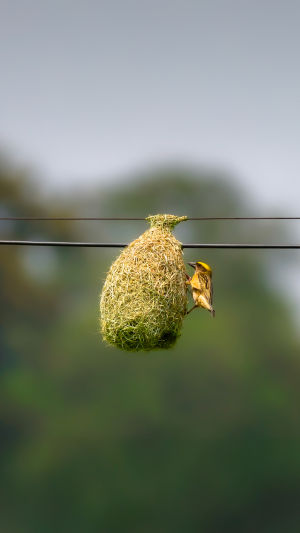Have you ever marveled at the complexity of a bird's nest and wondered how such tiny creatures can build something so detailed? Among all bird architects, weaver birds stand out as true masters of construction.
Their nests are more than just simple shelters—they are engineering marvels that combine precision, creativity, and survival strategy. Let's dive into the world of these fascinating birds and uncover the secrets behind their extraordinary nest-building skills.
<h3>The Weaver Birds' Unique Craftsmanship</h3>
Unlike many birds that simply gather twigs and leaves, weaver birds create intricate nests by weaving grasses and fibers with astonishing skill. These nests often hang suspended from thin branches, swaying gently in the wind but designed to be sturdy enough to protect eggs and chicks.
<b>Complexity that amazes</b>
Some weaver bird species build nests that look like elaborate hanging baskets, complete with entrance tunnels, multiple chambers, and waterproof linings. The construction process can take days or even weeks, showcasing a level of patience and technique rarely seen in the animal kingdom.
<b>Why so complicated?</b>
These elaborate designs serve critical purposes. The hanging structure deters predators like snakes and monkeys, while the tunnel entrance helps prevent intrusions by less welcome guests. Waterproofing ensures the nest remains dry during heavy rains, crucial for the survival of the young.
<h3>Innate Skill Meets Learned Expertise</h3>
One of the most intriguing aspects of weaver birds is how they master such sophisticated building without formal instruction.
<b>Instinctual architects</b>
Research shows that weaving behavior is largely instinctual, passed down genetically through generations. Even young birds, when isolated, will attempt to weave nests, indicating a strong inherited blueprint.
<b>Learning and improvement</b>
However, experience plays a role too. Older, more skilled birds tend to produce better-quality nests, suggesting that practice sharpens their weaving finesse. Observation of their parents and trial-and-error refine their techniques over time.
<h3>The Survival Edge of Superior Nests</h3>
These nests do more than just impress—they directly impact reproductive success and species survival.
<b>Protection from predators</b>
Studies confirm that well-constructed nests reduce predation risks, especially from snakes that have difficulty reaching the hanging nests. This safety increases the chances that eggs hatch and chicks mature.
<b>Microclimate control</b>
Weaver nests regulate temperature and humidity better than simpler nests, creating an optimal environment for fragile eggs and hatchlings. This microclimate helps young birds develop healthily even in challenging weather.
<h3>Lessons from Nature's Engineers</h3>
Weaver birds inspire human architects and engineers alike. Their use of natural materials, efficient design, and adaptive construction offer insights into sustainable building practices.
<b>Lightweight but strong</b>
The nests balance lightweight materials with structural strength, showing how natural fibers can be used creatively without heavy or processed materials.
<b>Adaptive design</b>
Weaver birds adjust nest size and shape depending on environmental conditions and predator pressure, a lesson in flexible, responsive architecture.
Next time you spot a weaver bird's nest dangling in the trees, take a moment to appreciate this tiny masterpiece of nature. It's a symbol of patience, ingenuity, and survival wrapped in a beautifully woven home. Have you ever seen a weaver bird's nest up close? What struck you most about it? These little architects continue to inspire wonder in every branch they grace.





